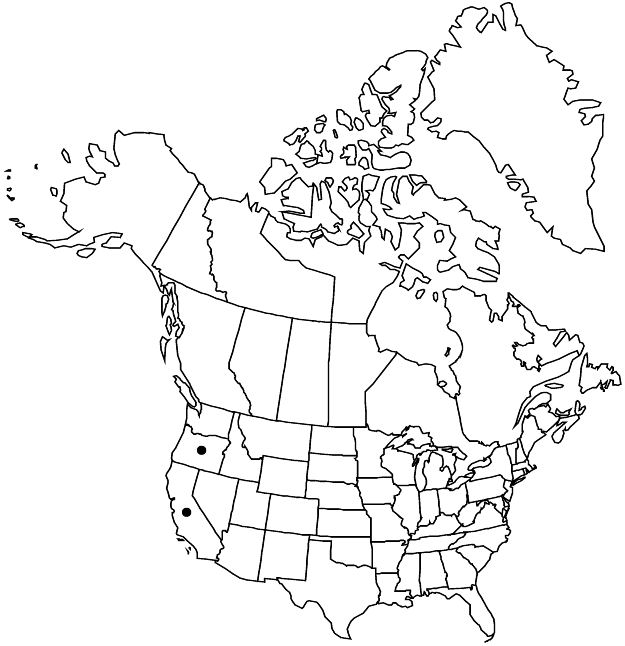Difference between revisions of "Sidalcea malviflora subsp. patula"
Perenn. Sp. Sidalcea, 21. 1957.
FNA>Volume Importer |
FNA>Volume Importer |
(No difference)
| |
Revision as of 20:16, 24 September 2019
Plants (0.2–)0.5–0.6(–0.9) m, usually with elongated, freely-rooting, sometimes matted rhizomes 2–5 mm diam. Stems erect or ascending, base decumbent, freely rooting, softly bristly-hairy proximally, stellate-hairy distally, usually not densely so. Leaves mostly basal, some cauline; stipules sometimes purplish, lanceolate to ovate, 5–6(–9) × 1.5–3 mm; petioles of basal leaves 7–30 cm, 5–8 times as long as blades, gradually reduced distally to 1–2 times as long as blades, distalmost petioles 1/2–1 times as long as blade; blade 3–12 cm wide, basal unlobed and margins crenate to shallowly 7–9-lobed and margins coarsely dentate-crenate, distal more deeply incised to digitate, distalmost divided nearly to base, 5–7-lobed, lobes dentate to laciniate, surfaces densely stellate-hairy abaxially, usually hirsute adaxially, hairs simple or forked. Inflorescences dense, spicate to capitate, usually unbranched or with reduced lateral branches, 10–20+-flowered, 2–6 cm, to 15–20(–30) cm in fruit, fruits congested or spaced, not overlapping on elongated axis, flowers obviously overlapping, stiffly erect, usually 5+ open at same time, proximalmost 1–3 flowers usually in leaf axils and separated from spike above, flowers in pistillate plants smaller and more separated; bracts lanceolate, 5–7 × 2 mm, shorter or longer than pedicels, distal undivided or 2-fid, proximal separated to base. Pedicels usually 2–3(–10) mm. Flowers: calyx 8–13 mm, hairy, hairs small, stellate and with longer, usually forked bristles; petals bright pinkish to rose-pink, drying dark purple, pale-veined at least when dry, pistillate 9–11(–15) mm, bisexual 15–25 mm; staminal column 5–7 mm; anthers white; stigmas (6 or)7 or 8. Schizocarps 6–8 mm diam.; mericarps (6 or)7 or 8, 3.5–4 mm, glandular-puberulent, prominently reticulate-veined, rugose, and pitted, mucro 0.3–0.5(–1) mm. Seeds 2.5 mm. 2n = 40.
Phenology: Flowering May–Jul.
Habitat: Open coastal forests, grassy areas, sometimes serpentine
Elevation: 0–700 m
Discussion
Of conservation concern.
Subspecies patula is rare and is distinguished by its dense, relatively short, spiciform inflorescences that elongate in fruit, its usually rough indument, its tendency to retain basal leaves, and its relatively long, freely rooting rhizomes that sometimes form mats. Some collections show a transition with subsp. rostrata, which usually has unlobed stem leaves, a denser tomentum, and shorter rhizomes, and with Sidalcea virgata, which is less hairy, has shorter rootstocks, and is more open-flowered. Molecular data support the Malviflora clade including subsp. patula but not including S. virgata (K. Andreasen, pers. comm.). Subspecies patula is a candidate for threatened or endangered listing in Oregon; fewer than 20 populations of it are known. It is known from coastal Del Norte and Humboldt counties in California and Curry County in Oregon.
Selected References
None.
